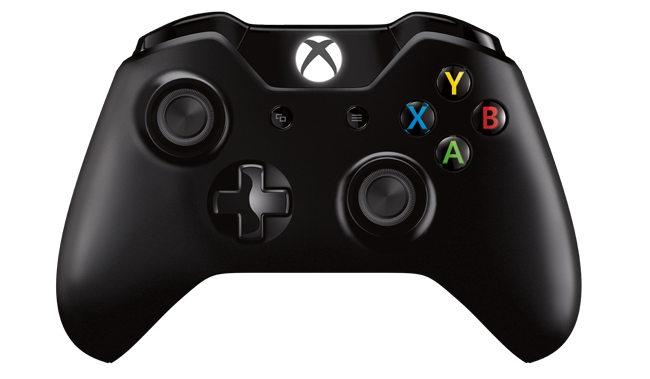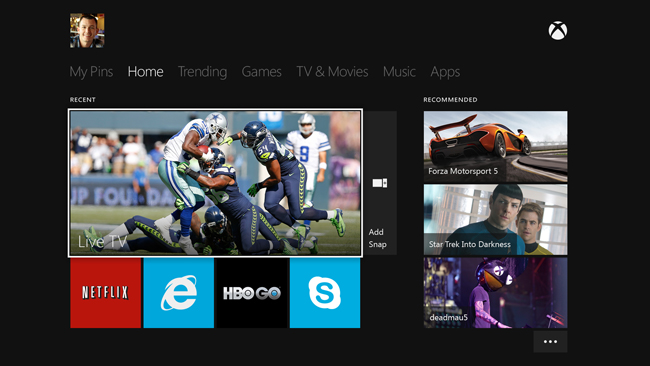Microsoft has brought the Xbox One to light as its next-generation console at a press event at its Redmond, Washington, HQ. But to call it a games console doesn’t actually do it justice, so Microsoft has gone with ‘all-in-one home entertainment system’.
The Xbox One – named for Microsoft’s focus on the all-in-one experience – comes with an eight-core x86 processor, 5bn transistors, 8GB RAM, USB 3.0, Wi-Fi direct and a Blu-ray drive.
It will be available worldwide in time for the holiday season this year, competing directly with Sony’s PlayStation 4.
Design-wise, the entertainment system looks rather boxy and large and, if Microsoft considers the main console a ‘set-top box’, it’s hard to imagine a modern TV set this box could sit on top of.
The horizontal orientation was apparently necessary for the inclusion of a high-speed Blu-ray disc drive – something that has caused quite a stir among the PlayStation fans.
Kinect and control
Users can switch on the Xbox One by simply saying, “Xbox, on” and the voice control demonstrated throughout today’s event was seamless. Hand gestures were also demonstrated to show how quickly users can switch from watching TV, to gaming, to listening to music, to browsing the web.
With all this functionality on offer, Microsoft has incorporated a snap mode (which Windows 8 users will be familiar with) to allow users to do two things on-screen at once. This was demonstrated with a video call through Skype for Xbox One, which has been specially designed for the new system and will allow users to make group calls through their TVs.

The new Kinect sensor for Xbox One
Control of the console hinges on the new 1080p Kinect sensor, which has been completely redesigned for increased precision and responsiveness. Microsoft claims it will work in almost all lighting conditions and that it can detect even a slight wrist rotation.
The new Kinect can also distinguish a single user’s voice and will load a home screen created just for them. The Xbox One keeps track of what’s trending among the Xbox community while also getting to know individual users in order to present them with options they will like.
The controller has also been improved with more than 40 technical and design innovations, including an updated directional pad, thumb stick, ergonomic fit and new vibrating impulse triggers.
New and old franchises
Head of Microsoft Studios, Phil Spencer, said today there will be 15 exclusive Xbox One titles released in its first year, and eight of these will be new franchises.
Eric Hirshberg, CEO of Activision Publishing, revealed footage from the upcoming Call of Duty: Ghosts which utilises a new next-generation engine. Some of the graphics unveiled at the event were photorealistic in quality and Oscar-winning writer-director Stephen Gaghan has even been called up for that added touch of master storytelling.
From EA, Madden NFL 25, FIFA 14, NBA Live 14 and EA Sports UFC will all be coming to Xbox One later this year. These games are supported by the new EA Sports Ignite engine, which allows for 10 times more animation detail.
Other games teased during today’s event include Forza Motorsport 5 from Turn 10 Studios and Quantum Break from Remedy Entertainment, but more details on Xbox One gaming are expected to be revealed at E3 next month.
Shared experiences
As far as gameplay goes, Xbox One comes with a dedicated gaming DVR, allowing players to edit and share gameplay footage with their friends. Sony also introduced similar features for the upcoming PlayStation 4, but the editing capability could be unique to the Xbox One.

Xbox One controller
Xbox Live has also been optimised to improve the gaming experience and it was announced that 300,000 servers will be employed to power the network on Xbox One, compared to the 15,000 used to power it now.
Users will be able to install in segments and get on with the gaming side of things and updates will also be downloaded in the background.
Existing Xbox Live Gold memberships for Xbox 360 will carry over to Xbox One and users will be able to access their personal profiles, including games and entertainment, on any Xbox One.
Other Xbox Live improvements include the addition of living games that evolve as users play, expanded achievements and deeper SmartGlass integration.
The gamification of TV
But, if anyone was still holding onto the notion that Xbox is a games console first and foremost, that can be thrown out the window following tonight’s announcements. The Xbox ecosystem is now an entertainment hub, and the Xbox One epitomises that.
TV was a major focus of the proceedings and Microsoft is committed to bringing live TV from cable, telecommunications and satellite providers to the Xbox One in all markets through various solutions. While this will be available in the US at launch, the plan is to scale these services globally over time.
At launch, live TV support will require a receiver device with HDMI output that will be sold separately.
What’s interesting about a games-console-turned-entertainment-system is that Xbox is determined to blur the lines between all forms of entertainment. This was clear in the teaser for Quantum Break, a game from the makers of Max Payne that mixes TV drama with gameplay.

Home screen on Xbox One
At another point, Nancy Tellem from Xbox Entertainment Studios was joined by Bonnie Ross from 343 Industries to reveal that Halo – the video-game franchise that has already spawned books, comics and a web series – will now be made into a TV series with the help of none other than director Steven Spielberg. Spielberg will serve as executive producer on the series, which will involve exclusive interactive Xbox One content created in partnership with Xbox Entertainment Studios and 343 Industries.
Xbox also revealed details of a multi-year partnership with the NFL that will make American football a more interactive viewing experience for Xbox One owners. Speakers today focused on how this will improve their Fantasy Football experience, but innovations involving Skype, SmartGlass and technology worn by players will also have a role to play.